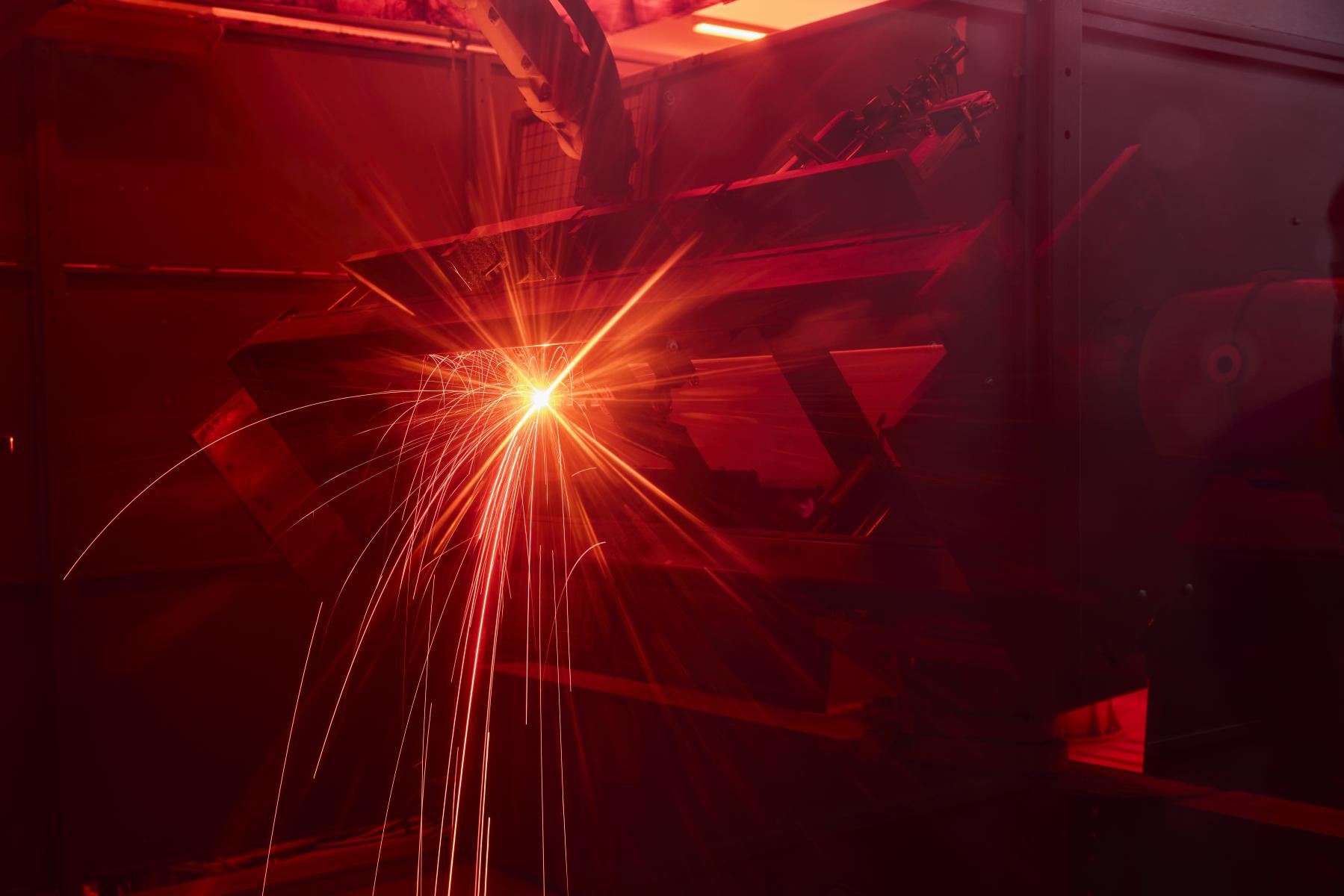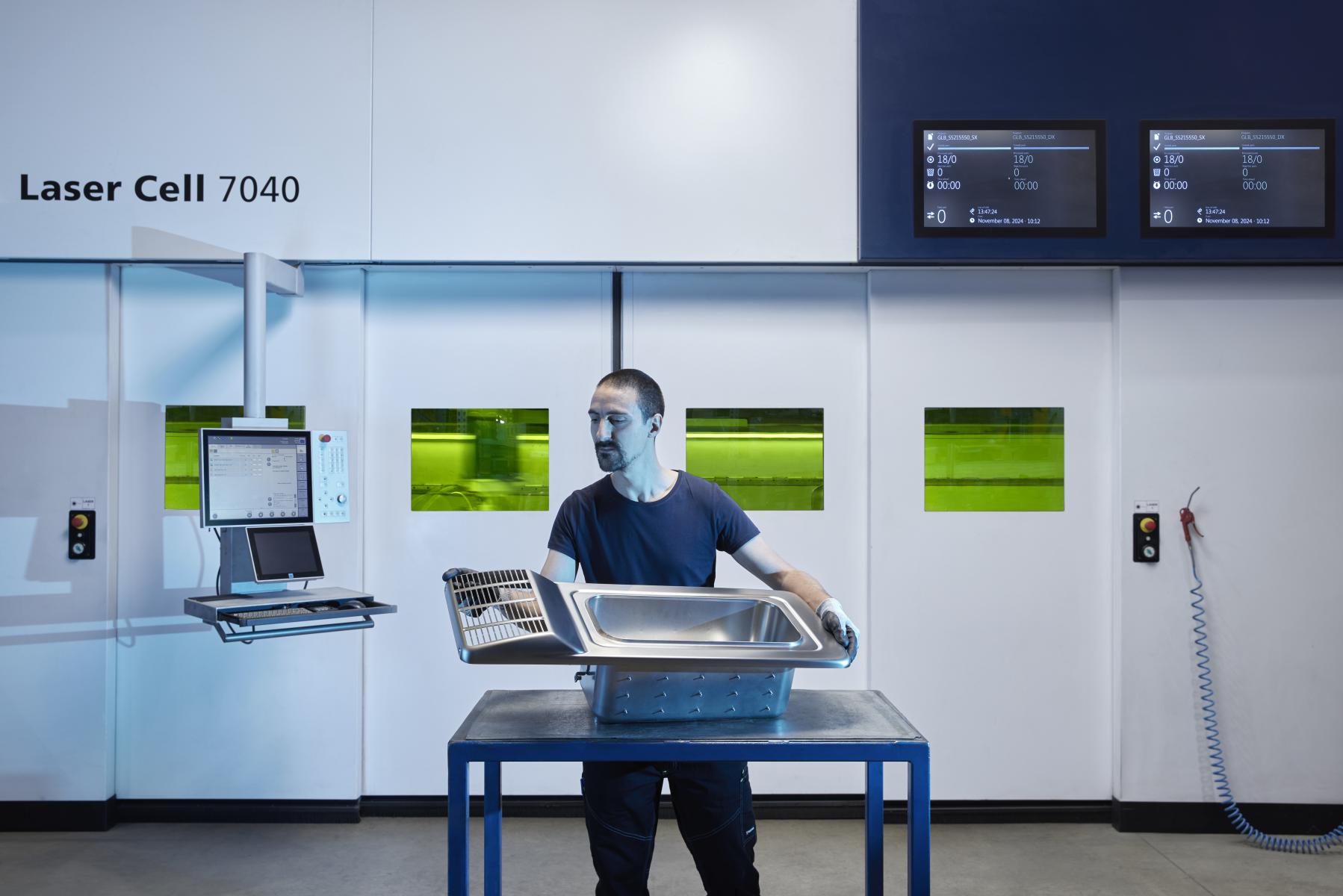Breadcrumb
How to MIG weld sheet metal
Do you want to find out how sheet metal MIG welding takes place and which metals you can work with the MIG method? Read our article and become an expert!

Welding sheet metal using MIG (Metal arc Inert Gas) on an industrial level means achieving optimal results in processing a variety of metal types and thicknesses. The MIG method is a continuous wire welding process where an overlay gas ensures protection of the weld pool. MIG welding is used where high productivity and high flexibility of use are required.
How sheet metal MIG welding is done: the process
First, let’s see specifically what MIG welding is and how to MIG weld.
MIG welding is a type of arc welding. To heat metals and enable welding, it uses the power of an electric arc that strikes between the electrode (called filler material) and the metal to be welded. It is also a type of continuous wire welding: during the process, the electrode is melted together with the edges of the metal to be welded.
MIG is a type of welding that uses the action of certain gasses as protection of the weld pool. Gasses are introduced here from a cylinder to protect the arc and the welding zone from the influences of the surrounding atmosphere so that edges are welded without imperfections.
Eventually, MIG welding is a process that is fully automated at Minifaber, thanks to the use of high-tech anthropomorphic robots that guide the flashlight over the weld joint of the workpiece to be welded. You can count on the expertise of our technicians in setting the correct tension and the amount in meters/minute of wire dispensed according to the work to be done, but our processes are much faster precisely because of the automated machinery. This is not always the case: in many companies, operator intervention is still required to guide the welding arc.
When it is recommended to use MIG welding for sheet metal
MIG welding is certainly the most widely used technique in the industry. It provides a higher output in terms of metal contributed and allows prolonged processing without the need to stop the process to re-equip the welding generator, as is the case with the MMA process, for example.
Read more: Metal welding, advantages and disadvantages of the most used technologies

MIG welding is mostly used on thicker metals and mass production, but it can also be chosen to weld thinner sheets such as aluminum. MIG welding is also more economical than other types of welding: in fact, MIG welders are significantly less expensive when compared to other types of machines. The presence of shielding gas ensures that the process takes place without interference from any metal slag or oxygen.
The continuous wire process makes MIG welding:
- Flexible in terms of use, because it allows any metal to be welded;
- Suitable for high production rates, because there is no need to replace the electrode;
- Versatile on multiple metal types (aluminum, steel, titanium, iron, etc.) and thicknesses.
MIG welding: which wire to choose?
Continuous wire welding with MIG uses a wire that is inserted into the welding machine flashlight. The morphology of the wire section can be of two types:
- Solid wire: section consisting only of cored metal wire. Solid wire is chosen from the same substance to be welded; it must have the same chemical composition to be effective. Elements that help clean the material to be welded are present in the wire.
- Flux-cored wire containing granules. The flux-cored wire performs the same function as the coated electrode. Flux-cored wire has a gaseous protection, the center of the wire is filled with granular powder - the flux. Precisely because it functions as a coated electrode, it can be rutile, basic or special type.
Depending on the thickness of the sheets to be processed, one or the other type is chosen: for thicker and harder metals, solid wire is recommended, conversely, for welding thin metals, flux-cored wire is more suitable due to its lower amperage.
The materials and industries suitable for metal sheet MIG weld
MIG welding is suitable for almost all materials (iron, aluminum, stainless steel, copper, etc.). What makes the difference in choosing one over the other method is the amount of metal to be processed. For productions that need extreme speed and cannot be interrupted, MIG welding is ideal.
MIG-welded parts can be used for applications in a wide variety of industries. The ones that benefit the most are:
- Electromechanical;
- Vending;
- Kitchen robotics;
- Medical;
- Home appliance.
Minifaber deals with sheet metal MIG weld
Now that we've explained how to weld sheet metal with MIG, let's take a brief look at why Minifaber is the perfect partner to carry out this type of process on an industrial level. Here are some advantages of relying on us:
- Fully automated MIG process;
- Highly specialized welding technicians;
- Personalized consultation on your production needs;
- High-tech machinery;
- Precision in welding different metals and thicknesses;
- On-time delivery of semi-finished and finished parts.


